Here are a couple of lovely shots of Sparaxis and Freesia in my garden today.
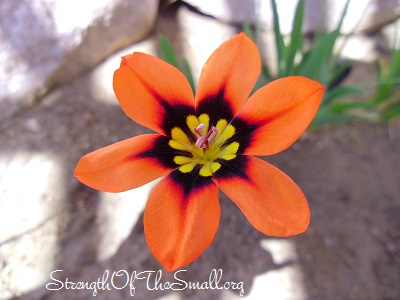
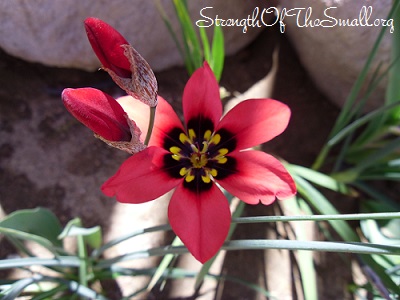
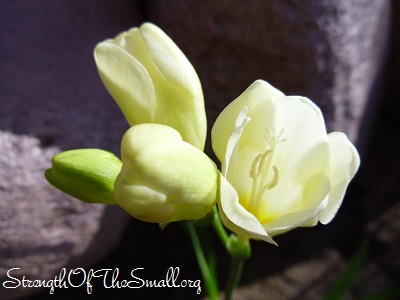
Happy Gardening!
Finding Contentment in Every Situation
Finding Contentment in Every Situation
Here are a couple of lovely shots of Sparaxis and Freesia in my garden today.



Happy Gardening!
Here in the High Desert, the first two weeks of Spring are awesome. The weather is simply at its best (not too cold, not too hot) and one is able to get out and get things done. After this time, we are ‘blessed’ with what seems to be a 24 hour high and gusty winds, which will go on for a few more weeks before finally settling. Gardening is not impossible at this time, just challenging as you have to go out there well equipped and armed:
It has been two weeks and a half since the beginning of Spring and the first Rose blooms in my garden are fading. I had only a few days to enjoy them and now snip them off like they were never there in the first place.
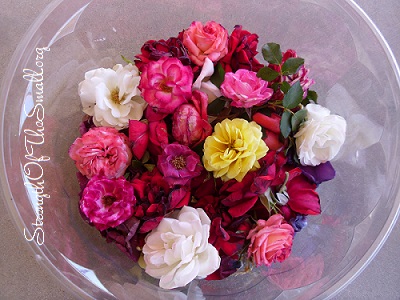
I was busy all morning going around my Rose Garden snipping off dead flowers from my Roses to give the plants a cleaner look and to encourage more flowering. For the past six years, it has become a task in which I take great pleasure in accomplishing and I do it once a week after the Rosebushes start flowering until the plant goes dormant. Here in the High Desert, it gets so hot that our beautiful flowers fade a few days after blooming and in extreme conditions they fade before fully blooming and sometimes the Rose’s buds dry out giving an unattractive appearance to the plant and subsequently, to the yard. To me, that is just unacceptable.
Happy Gardening!
Lovely blooms in my Garden this morning.
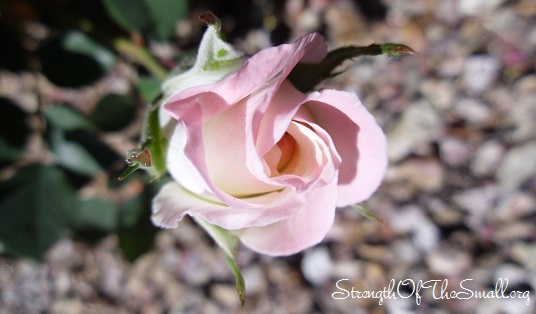
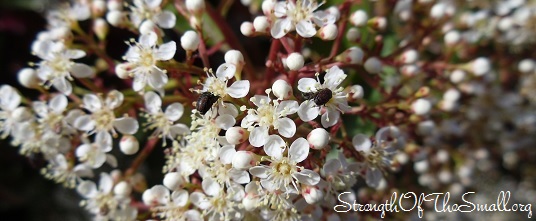
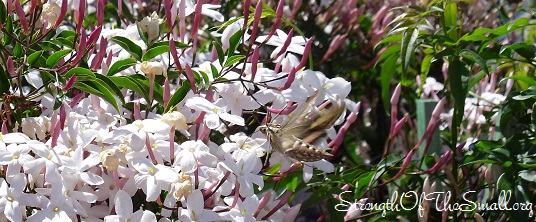
I hope you all had a blessed and beautiful day.
What a lovely day in the garden today! I spent part of my afternoon tending to my plant and preparing a location for an outdoor Dining Table we will be building soon. I love the way everything is coming together. I replaced a couple of plants in the backyard with some I bought from Lowe’s® and The Home Depot® (Shrubs, Succulents, Mini Roses, etc). I wasn’t the least surprised to find Curl Grubs beneath the roots of the plants.
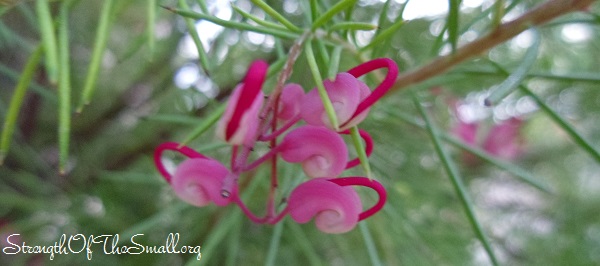
My evergreen Grevillea ‘Noellii’ is thriving on the side of the house in a very large ceramic planter we received from a wonderful neighbor. We placed it a few feet away from one of our bedroom windows and it’s always a delight watching it every morning. The plant is blooming with tiny lovely pink & white flowers.

Rosemary! Had it not been for the stray cats I was trying to keep out from my property, I wouldn’t have fallen in love with this plant. I have always known of its culinary and medicinal uses, but I had never thought of using it as a decorative plant in my garden. I love its aroma and its delicate small blue flowers (they’ve always bloomed from Sprint to Fall). My next project will be to propagate as many as possible.
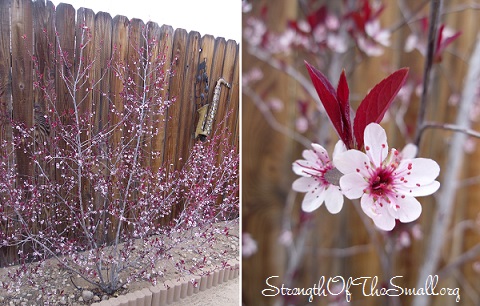
Above is my Purple Leaf Cherry Plum all in bloom and looking lovely. I picked it up at Lowe’s in 2010 at the discounted area, almost dead. I spent so much time and energy caring for it and I honestly wasn’t sure it would survive, but it did to my amazement and I am so grateful.
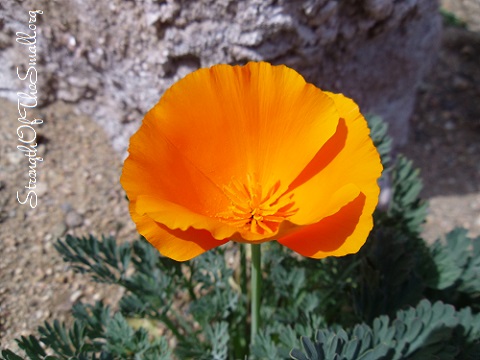
Back in 2008, my husband got me some California Poppies and for some reason they didn’t make it (I guess it probably had something to do with the fact that he brought them from a different location and the poor plants couldn’t handle our harsh weather). Last December, after helping one of my next door neighbors to complete a task, he agreed to give me a couple California Poppies growing in his yard. I transplanted them right away and they are now flowering. I love the bright silky yellow flowers. Click here to learn about its uses, side effects and interactions.
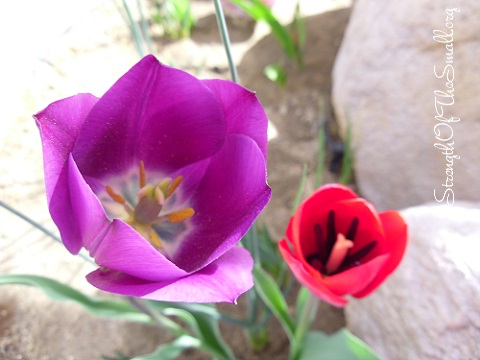
The Tulip bulbs I planted last Fall are starting to bloom. It was a pleasant surprise to wake up this morning and discover two gorgeous flowers staring back at us. My Daughter is so excited. She has a whole raised garden bed of her own which we planted last Fall as well and she is looking forward to seeing some beautiful blooms soon.
Spring, oh! dear Spring. The perfect time to garden for some of us and for those who planted early, it’s the perfect time to sit back and watch those flowers blossom. I hard pruned my Rosebushes three months ago and they are now looking healthy and vigorous. While we sit back and enjoy these beautiful little things, we have to keep in mind that Spring is also the perfect time for bugs and pests to slowly make their way into our Garden and settle. By the time we blink, our lovely plants will be hosting a variety of insects:
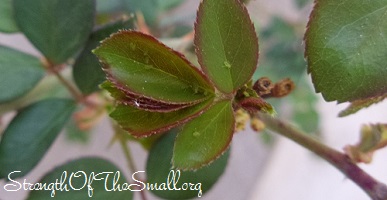
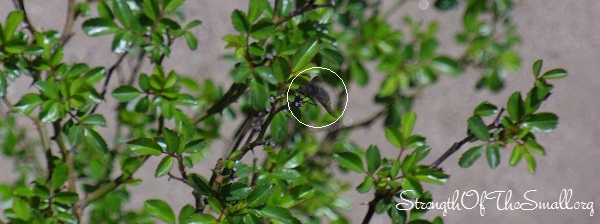

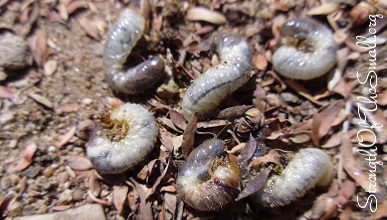
There are more Garden Pests out there, these are just the few I have to deal with, for now. It’s always a good idea to plant a variety of Flowers for their scents to attract beneficial bugs and deter unwanted pests. Plants such as Rue, Anise, Garlic, Catnip, Calendula, Marigolds, Dill, Daisy, Fennel, Mint, Coriander, Alyssum and Chives.
Click here for a list of Garden Pests and information on how to stop them.